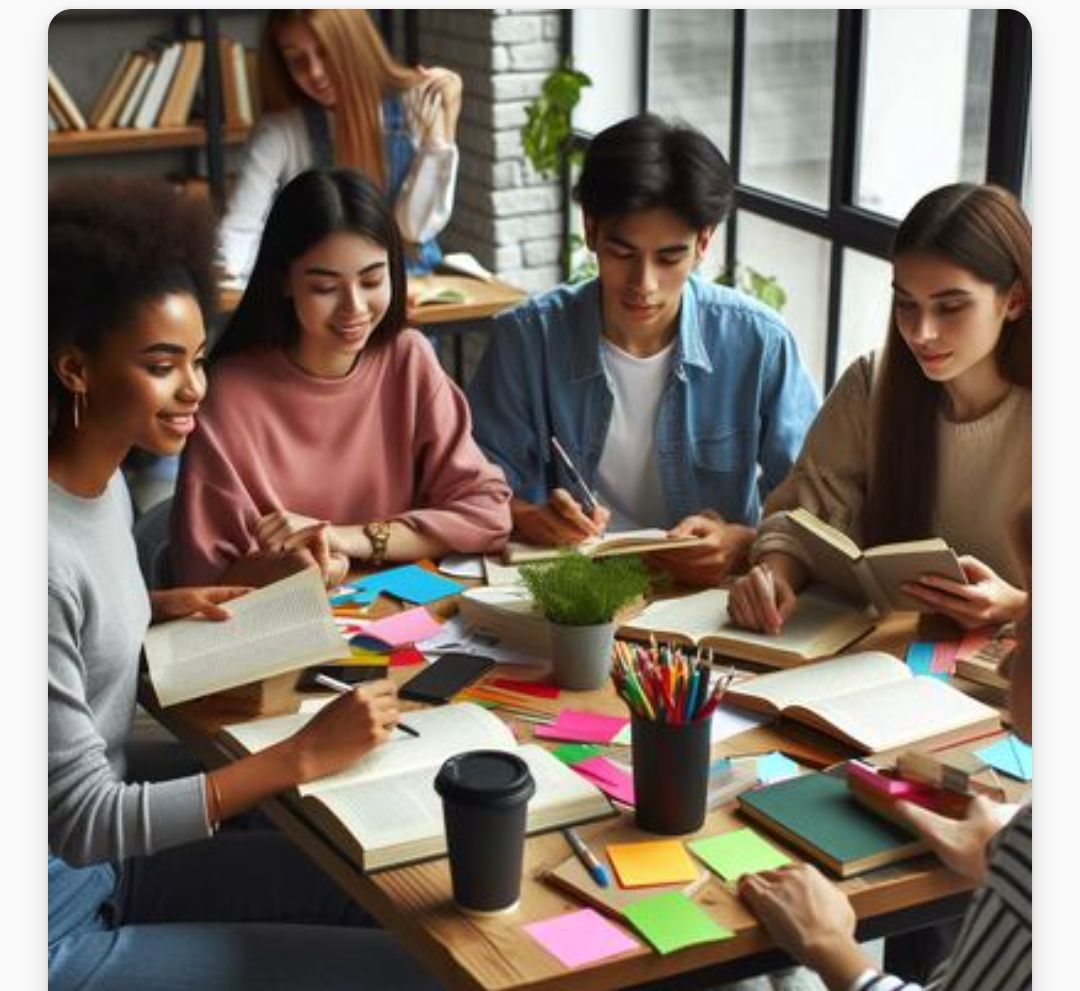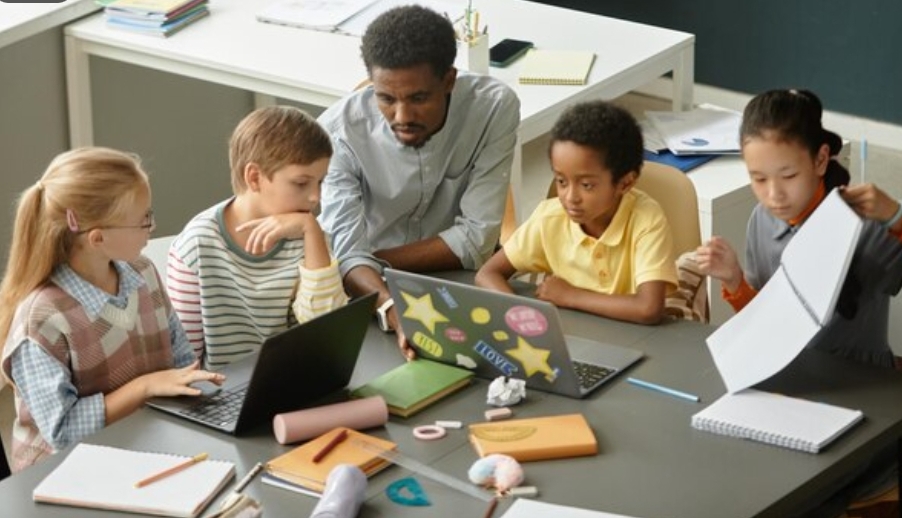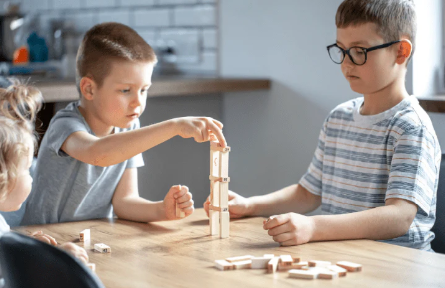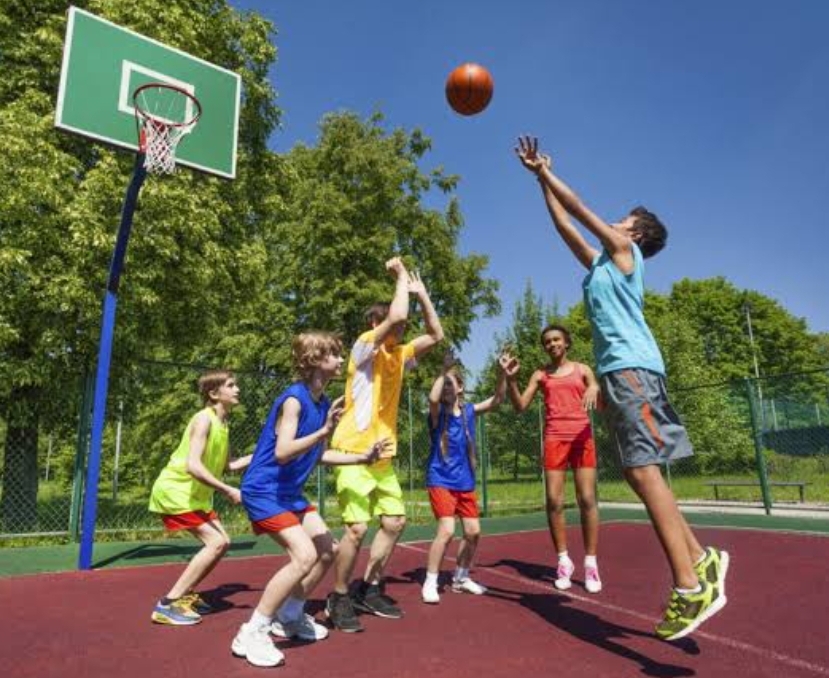
Imagine a classroom buzzing with intellectual energy. Students aren’t passively copying notes, but actively debating the merits of the French Revolution. Hands shoot up, not out of boredom, but a thirst to contribute their unique perspective to the discussion. This, my friends, is the magic of collaborative learning. It’s about ditching the solitary student stereotype and embracing the power of teamwork to transform education from a stagnant monologue into a symphony of learning!
Why Collaboration Makes Learning Cooler Than Ever:
Cast your mind back to your own school days. Were the most impactful moments spent hunched over textbooks alone, or were they fueled by lively discussions and group projects? Chances are, the collaborative experiences were the ones that stuck with you (and were probably more fun!). Here’s a deeper dive into why collaboration is a game-changer in education:
Brainpower Bonanza: Collaboration isn’t just about sharing notes – it’s about sparking new ideas in a vibrant intellectual exchange. By bouncing thoughts off each other, students explore diverse perspectives and ignite critical thinking skills. Picture a biology class where students, working in teams, piece together the complex puzzle of the human immune system. Each student brings their unique understanding to the table, fostering a deeper and more comprehensive grasp of the topic.
Communication Champions: The collaborative classroom is a breeding ground for communication superstars. Students hone their active listening skills, learn to express themselves clearly, and navigate respectful debate. Imagine a literature class where students dissect a Shakespearean sonnet together. They actively listen to each other’s interpretations, articulate their own arguments, and ultimately, become more confident communicators – a skill that translates beautifully into any future career path.
Problem-Solving Posse: Think about it – the real world rarely presents challenges with a “one size fits all” solution. Collaboration equips students with problem-solving superpowers that translate seamlessly to the complexities of life beyond the classroom. Working together, they learn to tackle complex issues, brainstorm diverse solutions, and navigate different approaches – a valuable skill set for any future career path, from engineering a sustainable city to crafting a winning marketing strategy.
Friendship & Fun Factor: Let’s face it, learning shouldn’t feel like solitary confinement! Collaboration fosters teamwork, builds friendships, and injects a dose of fun into the learning process. Students who feel connected and supported by their peers are more likely to be engaged, motivated, and enthusiastic about acquiring new knowledge. Imagine a history class where students collaborate on a historical reenactment. The process of researching, planning, and performing together not only fosters deeper understanding of the topic but also creates lasting friendships and memories.
Collaboration Doesn’t Happen by Accident
So, how do we transform classrooms into collaborative havens? Here are some detailed tips for teachers to unleash the power of teamwork:
Creative Group Projects: Ditch the tired science fair volcano model! Design projects that encourage students to work together on real-world challenges that ignite their curiosity and creativity. Imagine a group tackling a local environmental issue by researching sustainable solutions or designing a model for a more walkable neighborhood. These projects encourage students to collaborate, think critically, and apply their knowledge to make a real-world impact.
Think-Pair-Share: A Collaborative Cornerstone: This simple yet powerful technique ensures everyone gets a chance to think, process, and contribute. Students grapple with a concept individually, then discuss it in pairs, and finally, share their insights with the entire class. This allows even the quieter students to formulate their thoughts in a smaller setting before presenting them to the larger group, fostering a more inclusive learning environment.
Debate Clubs & Role-Playing: Stepping into History’s Shoes: Turn the classroom into a mini-parliament! Debate clubs or role-playing historical events encourage students to research, defend arguments from different perspectives, and see issues through a wider lens. Imagine a government class where students role-play the drafting of the U.S. Constitution. This collaborative exercise requires students to research historical figures’ viewpoints, debate the merits of different proposals, and ultimately, work together to reach a consensus – a valuable skill for future leaders and engaged citizens.
Beyond the Basics: Collaborative Learning for All Ages and Subjects
The beauty of collaborative learning is its versatility. It can be implemented across all age groups and subject areas, fostering a dynamic learning environment for everyone. Here are some specific examples:
Elementary School: Imagine a vibrant kindergarten classroom where students collaborate on building a block city, complete with roads, bridges, and even a pretend library. This playful activity fosters collaboration, spatial reasoning, and early literacy skills.
Middle School: In a history class, students can work together to create a living museum exhibit on a particular historical period. This collaborative project requires research, teamwork, and creative expression, bringing history to life in a memorable way.
High School: For an advanced science class, students can team up to design and conduct their own scientific experiments. This not only reinforces scientific concepts but also hones collaboration, critical thinking, and problem-solving skills – all essential for future scientists and innovators.
Technology as a Collaboration Catalyst
Technology can be a powerful tool to enhance collaboration in the classroom. Here are a few ideas:
Online Collaboration Tools: Platforms like Google Docs or collaborative whiteboards allow students to work together on projects in real-time, even if they’re not physically in the same classroom. This can be particularly helpful for group projects or students working remotely.
Educational Games and Simulations: Many online games and simulations are designed with collaboration in mind. Students can work together to solve problems, explore virtual worlds, and learn in a fun and interactive way.
Video Conferencing: Video conferencing tools allow students to connect with experts or peers from around the world. This can be a valuable way to broaden perspectives and foster collaboration on projects with a global scope.
Collaboration: A Journey, Not a Destination
Fostering a collaborative learning environment is a journey, not a destination. Here are some tips for teachers to keep in mind:
Clear Expectations: Set clear expectations for group work, outlining roles, responsibilities, and deadlines. This helps ensure everyone is on the same page and contributes effectively.
Celebrating Individuality: Collaboration thrives on diversity of thought. Encourage students to share their unique perspectives and strengths within the group.
Conflict Resolution Strategies: Disagreements are inevitable in collaboration. Equip students with conflict resolution strategies to navigate disagreements constructively and reach solutions together.
Assessment Strategies: Develop assessment strategies that evaluate both individual contributions and the effectiveness of teamwork. This encourages students to hold themselves and their peers accountable.
The Power of Collaboration: A Ripple Effect
The benefits of collaborative learning extend far beyond the classroom walls. Students who excel at collaboration are more likely to become well-rounded individuals who can thrive in a complex and interconnected world. They become effective communicators, problem-solvers, and team players – skills that are highly sought after in any future career path. By fostering collaboration in education, we’re not just preparing students for exams, we’re preparing them to be successful, engaged, and collaborative citizens of the world!
Collaboration is the future of education. It’s about empowering students to become active learners, effective communicators, and collaborative problem-solvers – a skill set that guarantees success not just in school, but in the ever-evolving world that awaits them. So, let’s ditch the lone wolf mentality and unleash the power of learning lions!
So, are you ready to unleash the power of collaboration in your classroom? Join the conversation in the comments below! Share your experiences, success stories, and challenges. Together, let’s create a future where learning is a collaborative adventure!










